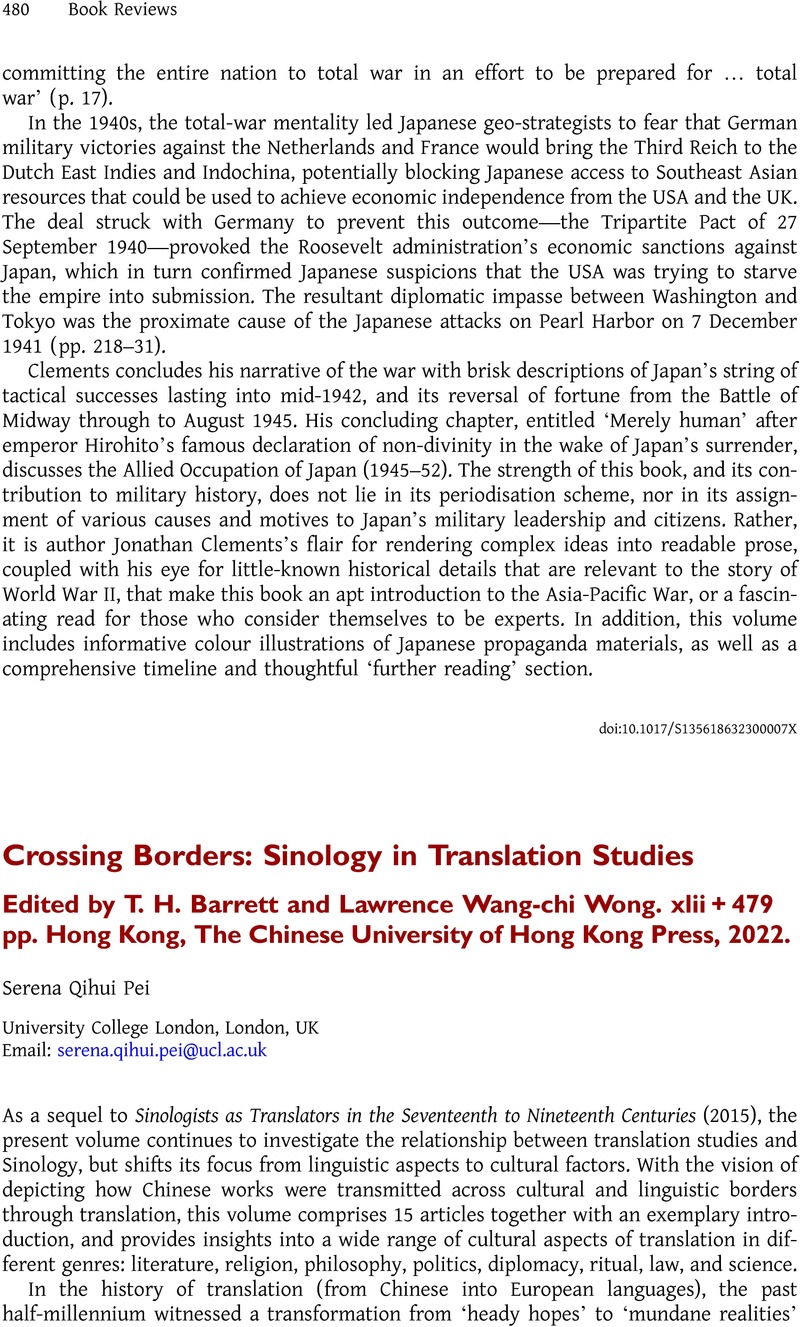No CrossRef data available.
Article contents
Crossing Borders: Sinology in Translation Studies Edited by T. H. Barrett and Lawrence Wang-chi Wong. xlii + 479 pp. Hong Kong, The Chinese University of Hong Kong Press, 2022.
Review products
Crossing Borders: Sinology in Translation Studies Edited by T. H. Barrett and Lawrence Wang-chi Wong. xlii + 479 pp. Hong Kong, The Chinese University of Hong Kong Press, 2022.
Published online by Cambridge University Press: 04 December 2023
Abstract
An abstract is not available for this content so a preview has been provided. Please use the Get access link above for information on how to access this content.

Information
- Type
- Book Review
- Information
- Copyright
- Copyright © The Author(s), 2023. Published by Cambridge University Press on behalf of The Royal Asiatic Society
References
1 Manning, , ‘Chinese jests’, New Monthly Magazine and Literary Journal (1826), p. 280Google Scholar.


